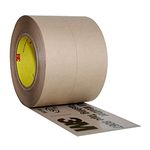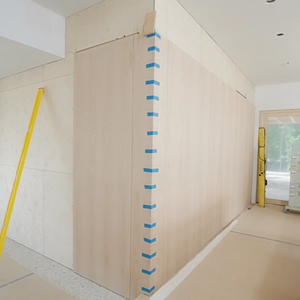An Inside Look at Box-Beam Levels
How accurate is accurate enough? It all depends on the bubble vial and frame construction.

Synopsis: No carpenter’s toolbox is complete without a box-beam level, but choosing the right one can be a difficult task. In this article, senior editor Justin Fink looks at how box-beam levels are made. The level starts with an extruded aluminum frame that is straight, flat, and strong. Some levels are ridged for strength, and some have beveled or rounded edges, which can make it difficult to mark an accurate line. Most vials are glued to the frame, either at the top, bottom, or side, although one manufacturer (Sola) uses a glue-free attachment process. Modern levels use a single vial, either tubular or block, and can be read in both standard and inverted positions. Levels are calibrated to an accuracy standard of 0.029°. When choosing a level, ask other carpenters about the levels they use, and also consider how much you will need to use your level. If it will be used infrequently, a lower-priced model might suffice. If it will be used often, it might be a good investment to buy a more durable higher-priced model.
Buying any tool takes a certain leap of faith, but buying a level may require the biggest. Most tools have at least some physical considerations — handle comfort, trigger action, overall quality of construction — but how do you judge a box-beam level?
Levels are tricky to assess because you’re really taking a gamble on long-term durability. Your level will inevitably be dropped, take a beating in the back of your truck, or slide down a wall and land on the floor. It’s crucial to get a level that starts out accurate and stays accurate. That’s a hard thing to see, but it’s far more difficult to achieve. In speaking with five manufacturers about how they make their levels, I learned that the quality and durability of a box-beam level are determined by the aluminium extrusion, the vial, and the way that vial is mounted.
The frame is the backbone of a box-beam level
The frame of a box-beam level serves as an extension of the vials it holds and protects. That means the aluminium extrusion must start out straight, flat, and strong, and must remain that way no matter how many times you drop the level or drop something on it.
If you cut a stack of box-beam levels in half and look at the profile of each, you can see differences: the size and shape, the size of the bevels on the edges, and the number and placement of holes for vials and handles. Other differences, such as the type of aluminium and slight differences in wall thickness, you can’t see. All of these factors combine to strike a balance in cost, weight, strength, and long-term durability.
According to Mike Fraser, president of Stabila, the number-one failure point in levels is bending, and that typically happens right over the center vial. The second-most common failure is what he calls “tip overs and fall ons,” when the level either falls onto something or something falls onto it. This is a big deal because not only will the level no longer read accurately after being bent, but a bent frame is also the only thing that will void the tool’s warranty.
According to John Dwyer, vice president of sales and marketing at Johnson Level, “There isn’t a level maker in the world that extrudes their own aluminium.” Instead, they farm out the extrusion process to dedicated manufacturers, where frames are built to each company’s specs. Alan Karraker, president of Sola USA, says, “Getting a decent extrusion with the holes in the right place isn’t that tough. The hard part is making the vial.”
Performance comes down to sensitivity and accuracy
Two types of vials are used in box-beam levels: tubular vials and block vials. Regardless of the type of vial, there are two factors to consider: sensitivity and accuracy. The two are often confused, but they are very different.
For more photos and details, click the View PDF button below:
Fine Homebuilding Recommended Products
Fine Homebuilding receives a commission for items purchased through links on this site, including Amazon Associates and other affiliate advertising programs.

Handy Heat Gun

8067 All-Weather Flashing Tape

Affordable IR Camera






















